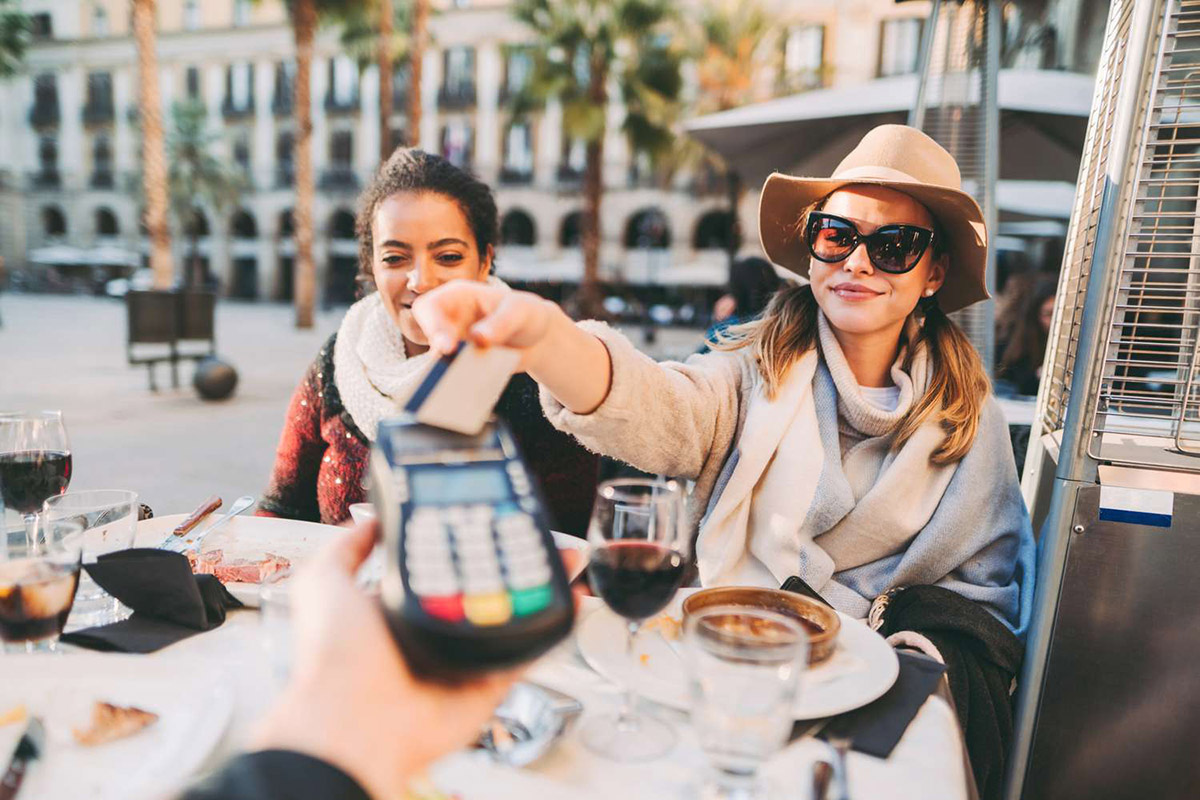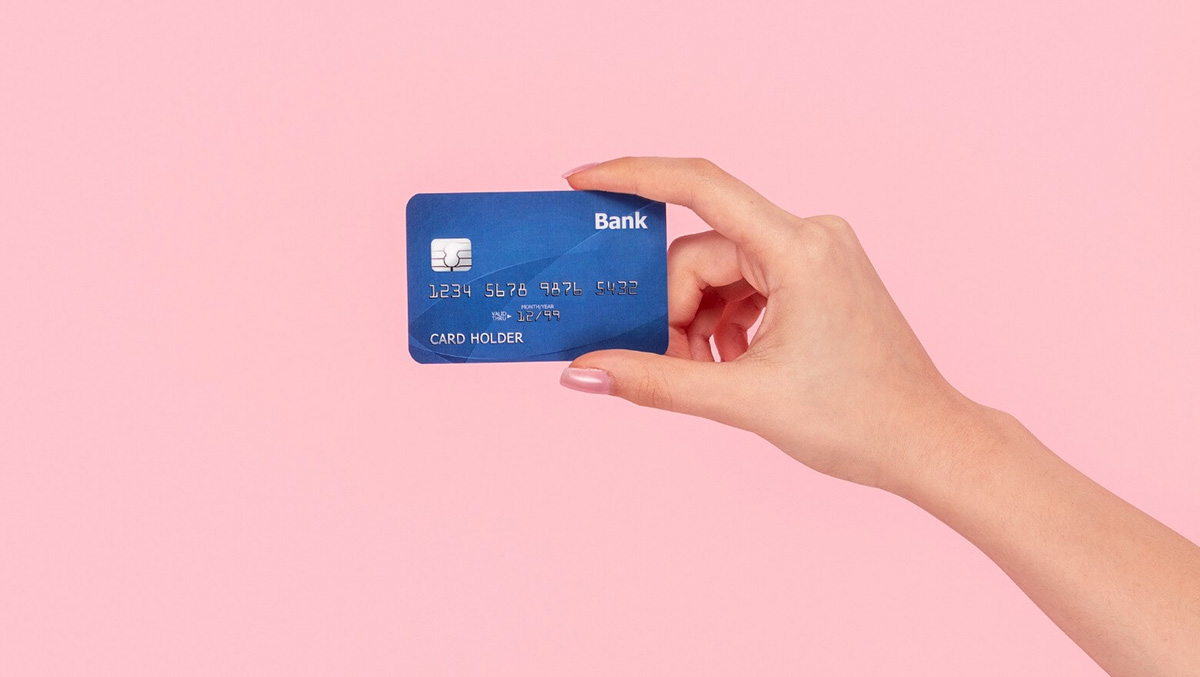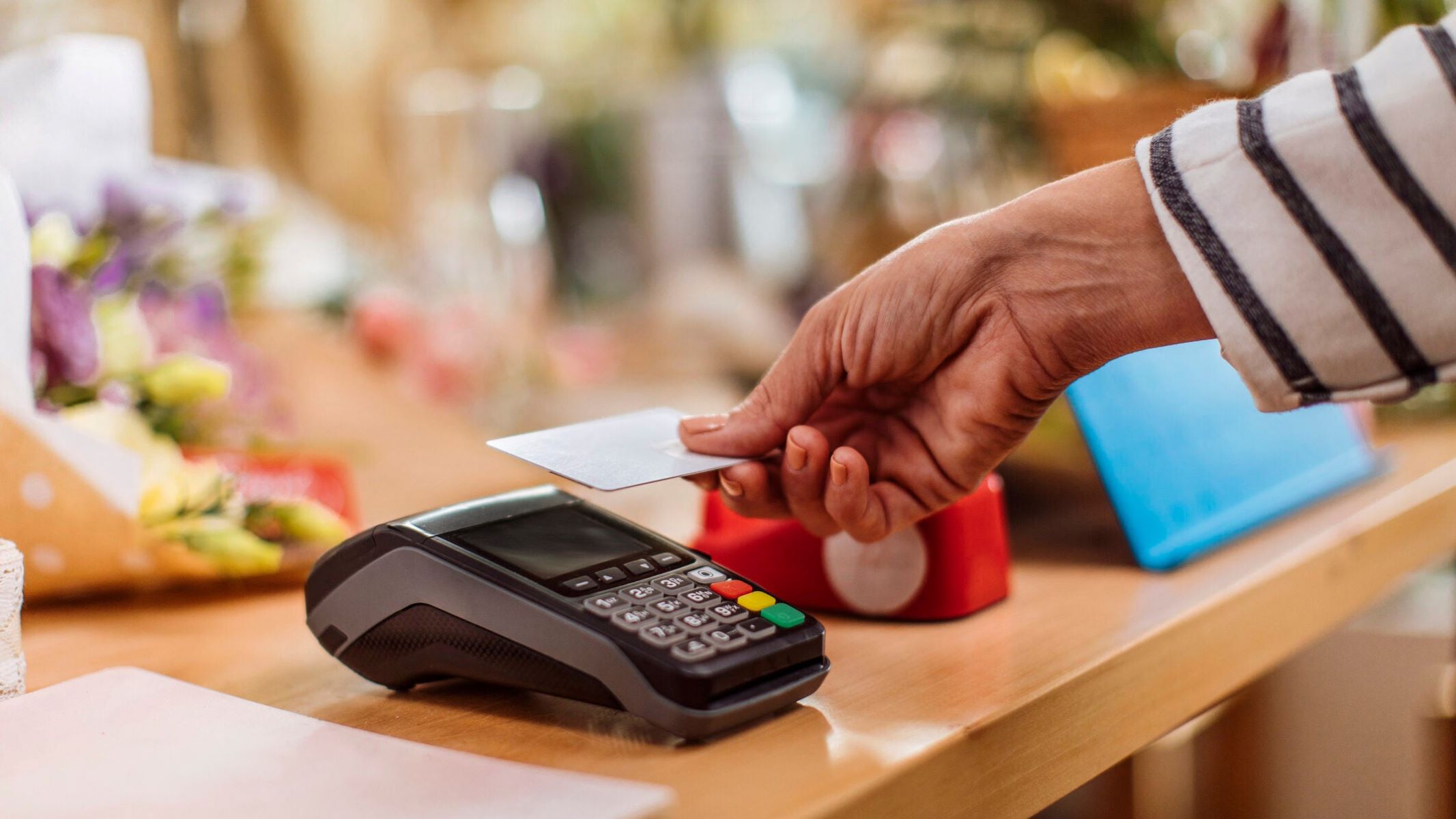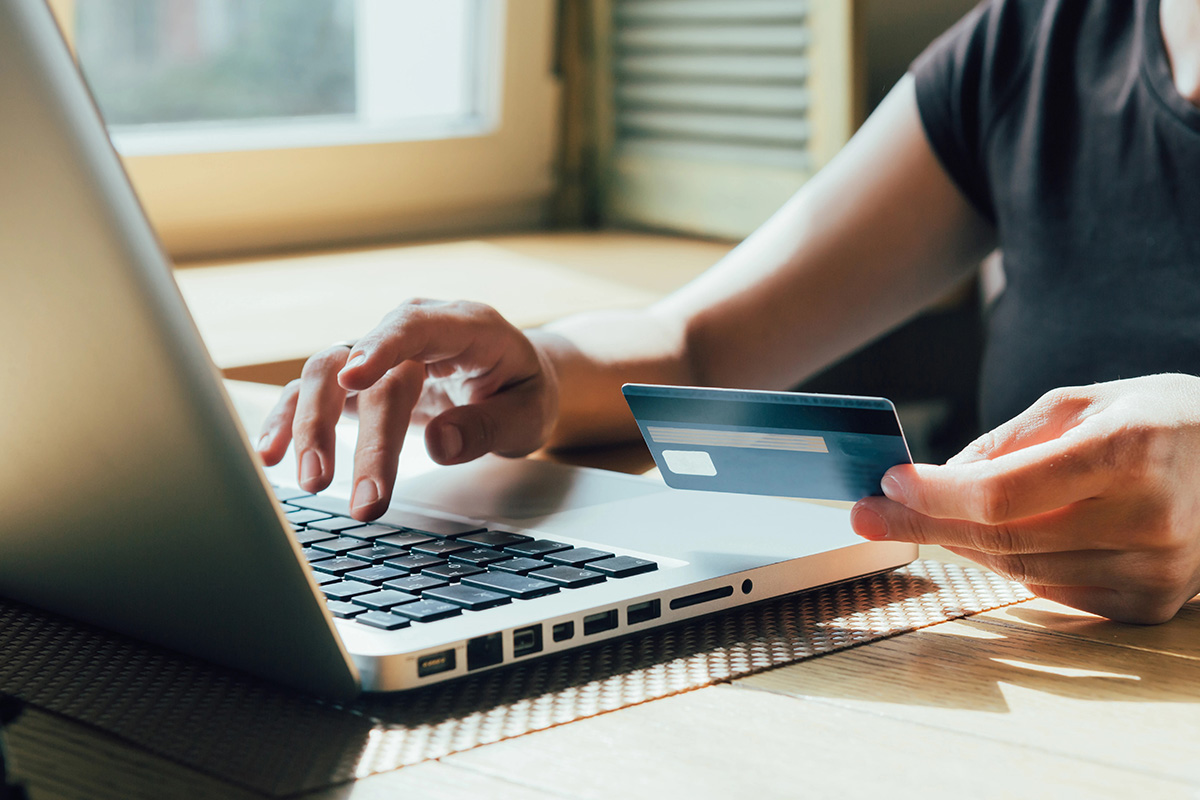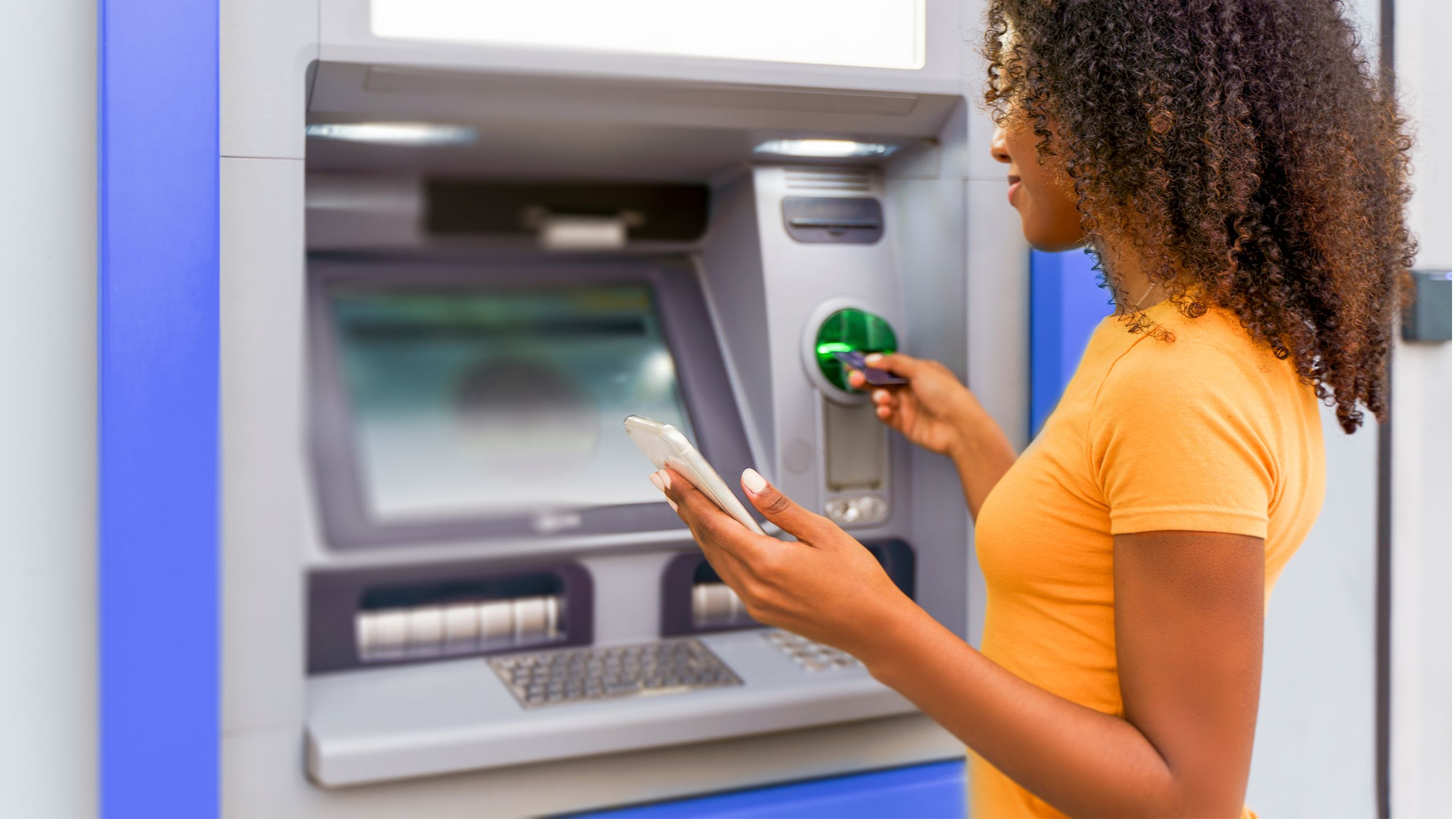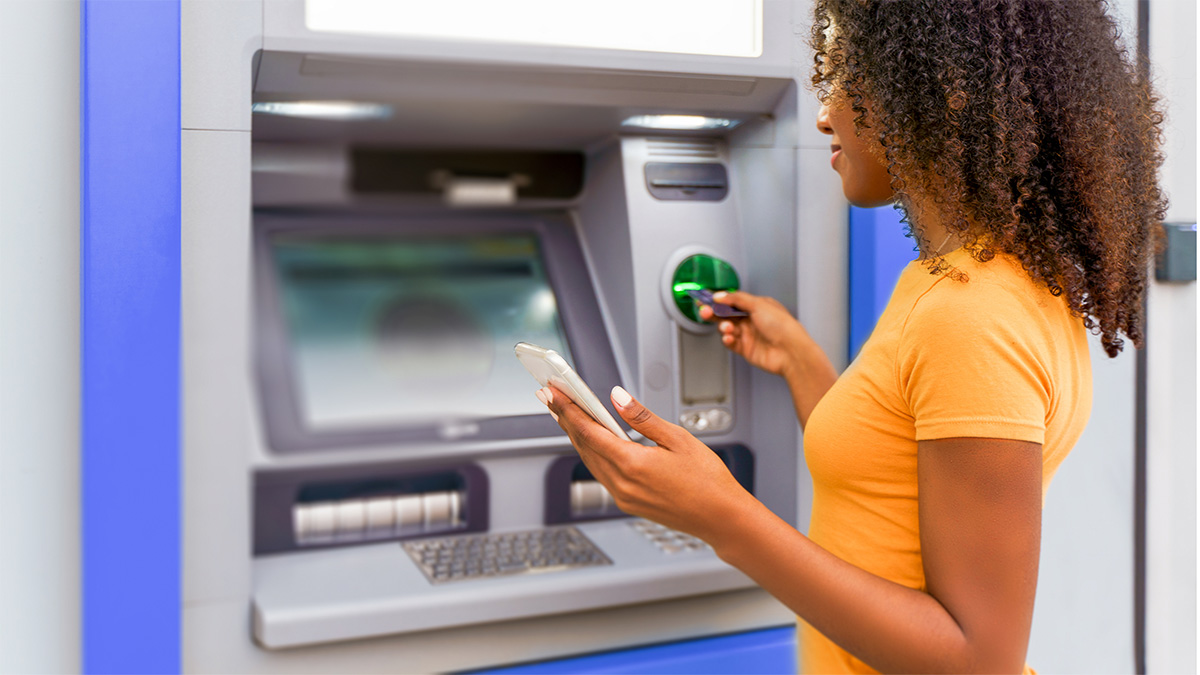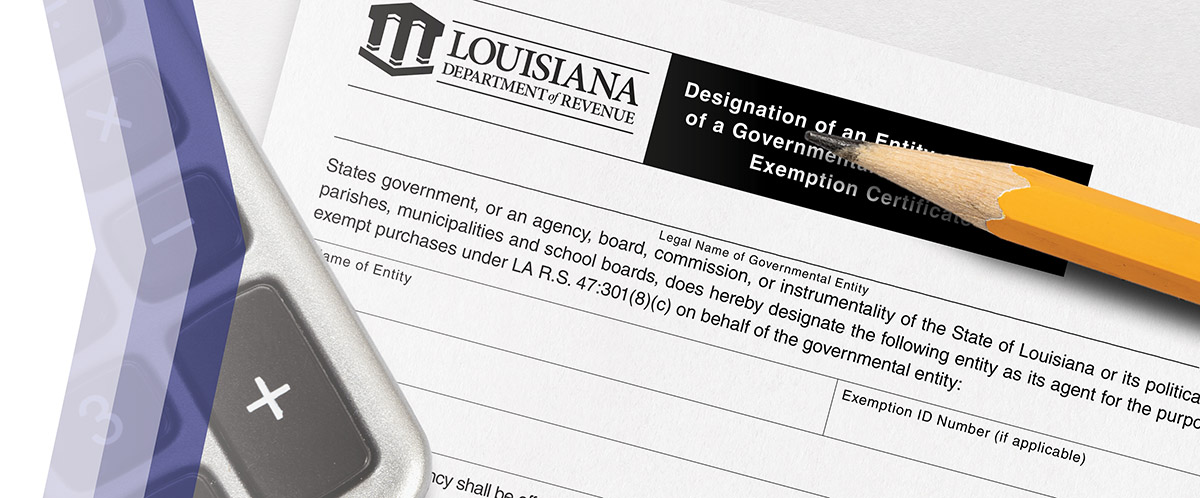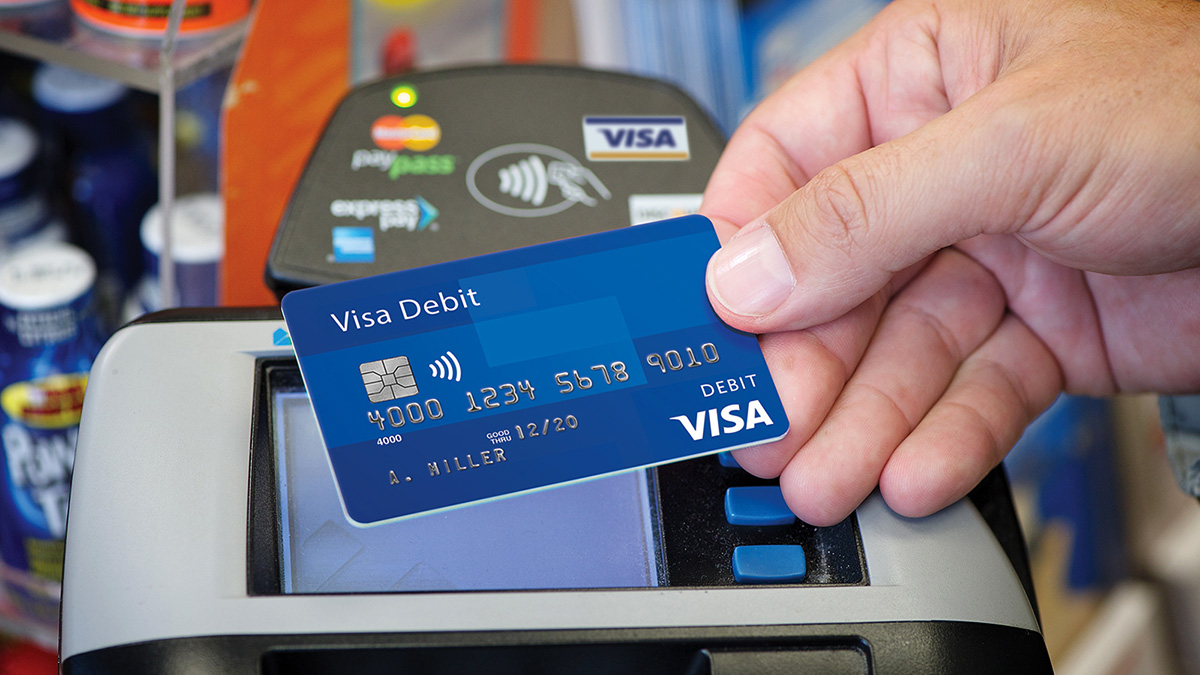

Finance
How To Get A Pin Number For Credit Card
Modified: March 1, 2024
Learn how to obtain a PIN number for your credit card and enhance your financial security with our comprehensive guide on credit card finance.
(Many of the links in this article redirect to a specific reviewed product. Your purchase of these products through affiliate links helps to generate commission for LiveWell, at no extra cost. Learn more)
Table of Contents
- Introduction
- Understanding the Importance of a PIN Number for Credit Cards
- Applying for a Credit Card
- Receiving Your Credit Card and PIN Number
- Activating Your Credit Card
- Choosing a Personalized PIN Number
- Memorizing and Protecting Your PIN Number
- Changing Your PIN Number
- Using Your PIN Number for Transactions
- Keeping Your PIN Number Secure
- Conclusion
Introduction
Welcome to the world of credit cards, where convenience meets financial management. Credit cards have become an essential tool for making purchases, paying bills, and building credit history. To ensure the security of these transactions, credit card companies employ the use of Personal Identification Numbers (PINs). In this article, we will explore the process of obtaining a PIN number for your credit card and the importance of safeguarding it.
When you receive your new credit card, it will typically come with a PIN number. This four-digit code adds an extra layer of security when making transactions at ATMs and point-of-sale terminals.
Understanding the importance of your PIN number is crucial. It serves as a verification tool, ensuring that you are the authorized user of the credit card. Without a PIN, unauthorized individuals would have a significantly easier time accessing your funds and engaging in fraudulent activities.
Now, let’s dive into the details of how to obtain a PIN number for your credit card, how to activate it, and how to ensure its protection throughout your financial transactions.
Understanding the Importance of a PIN Number for Credit Cards
A Personal Identification Number (PIN) is a crucial aspect of credit card security. It serves as a safeguard against unauthorized access to your funds and helps protect you from fraudulent activities. Understanding the importance of your PIN number will help you make informed decisions when it comes to managing your credit card.
First and foremost, your PIN number acts as a verification tool. Whenever you make a transaction at an ATM or a point-of-sale terminal, you will be prompted to enter your PIN. This ensures that you, as the legitimate cardholder, are making the transaction. Without a PIN, anyone in possession of your credit card could potentially make unauthorized purchases, putting you at risk of financial loss.
Moreover, a PIN adds an extra layer of security when withdrawing cash from an ATM. It acts as a unique code that only you should know, preventing unauthorized individuals from accessing your funds. This feature is especially important when you find yourself traveling internationally or in unfamiliar areas where the risk of theft or fraud may be higher.
Lastly, PIN numbers play a crucial role in safeguarding your identity and financial information. While signature-based transactions are still common, more and more merchants are incorporating chip-and-PIN technology, which requires the input of your PIN for each transaction. This added layer of authentication helps prevent instances of identity theft and card cloning, ensuring that only you can complete the transaction using your credit card.
It is essential to note that a PIN number should always be kept confidential. Avoid sharing it with anyone, including friends, family members, or even bank employees. Treat your PIN as a personal secret, just like your password or social security number.
By understanding the importance of your PIN number and taking the necessary steps to protect it, you can enjoy the convenience of credit card transactions while maintaining peace of mind about the security of your financial information.
Applying for a Credit Card
If you are considering getting a credit card, the first step is to apply. Applying for a credit card involves a simple process where you provide your personal information and financial details to the issuing bank or credit card company.
Before you start the application process, it’s essential to do some research to find the best credit card that suits your needs. Consider factors such as interest rates, annual fees, rewards programs, and any additional benefits offered by different credit card issuers.
Once you have identified the credit card you want, you can apply online, over the phone, or in person at a local bank branch. The application will require you to provide information such as your name, address, date of birth, social security number, and employment details. You may also need to provide information about your income and financial obligations to assess your creditworthiness.
When completing the application, be sure to read and understand the terms and conditions, including interest rates, payment deadlines, and any other fees associated with the credit card. It’s crucial to have a clear understanding of the card’s features and any potential costs involved.
After submitting your application, it will undergo a review by the issuing bank or credit card company. They will evaluate your credit history, income, and other factors to determine whether to approve your application. This process typically takes a few days, and you will receive a notification regarding the status of your application.
If your application is approved, the next step is to wait for the arrival of your credit card in the mail. This process usually takes around 7-10 business days. Once you receive your credit card, it’s time to activate it and, most importantly, obtain your PIN number.
Keep in mind that credit card approval is not guaranteed, especially if you have a limited credit history or a low credit score. In such cases, you may need to consider secured credit cards or other alternatives to build or rebuild your credit before qualifying for a traditional unsecured credit card.
Applying for a credit card is the first step towards financial convenience and responsible credit management. By understanding the application process and choosing the right credit card for your needs, you can embark on your credit journey with confidence.
Receiving Your Credit Card and PIN Number
After your credit card application is approved, you will eagerly wait for your new credit card to arrive in the mail. Typically, it takes around 7-10 business days for the card to reach your mailbox. Upon receiving your credit card, it’s important to handle it with care and protect it from theft or damage.
Along with your credit card, you will also receive an envelope or separate mail containing your PIN number. The PIN number is a crucial component of your credit card, as it adds an extra layer of security when making transactions. It is usually a four-digit code that you will use along with your credit card to verify your identity during ATM withdrawals and certain point-of-sale transactions.
When you receive the envelope containing your PIN number, make sure to open it in a secure and private location. Avoid sharing the PIN number with anyone, even close family members or friends. Remember, your PIN should be kept confidential to protect the security of your credit card and financial information.
Take the time to memorize your PIN number. Do not write it down or keep it stored anywhere with your credit card, as this increases the risk of it falling into the wrong hands. Instead, commit the information to memory to ensure that only you have access to it.
If for any reason you do not receive your PIN number with your credit card, contact the issuing bank or credit card company immediately. They will be able to provide you with instructions on how to obtain or reset your PIN number. It’s essential to act promptly to ensure the security of your credit card and prevent any potential unauthorized use.
In the event that your credit card or PIN number gets lost or stolen, report it immediately to the issuing bank or credit card company. They will assist you in canceling the card and issuing a replacement. By taking swift action, you can minimize the risk of fraudulent activity and protect yourself from any financial loss.
Receiving your credit card and PIN number is an exciting step towards financial freedom and convenience. Remember to treat your credit card and PIN with the utmost care and confidentiality to ensure the security of your finances.
Activating Your Credit Card
Once you receive your credit card in the mail, the next important step is to activate it. Activating your credit card is a necessary process to ensure that you can start using it for purchases and transactions.
The activation process may vary depending on the credit card issuer, but it is typically straightforward and can be completed in a few simple steps.
First, carefully read any accompanying instructions or materials that come with your credit card. These will provide specific details on how to activate your card. Some credit card issuers may require you to activate your card online through their website, while others may provide a phone number to call for activation.
If you are activating your card online, visit the credit card issuer’s website and look for the section related to card activation. You will usually need to enter your card information, such as the card number, expiration date, and the security code on the back of the card. Follow the prompts provided, and once completed, your credit card will be activated and ready to use.
If you need to activate your card by phone, dial the provided activation number and follow the automated prompts or speak with a customer service representative. They will guide you through the process and may ask for specific information, such as your card number, personal identification details, or the last four digits of your social security number. Once the activation is confirmed, your credit card will be ready for use.
It’s important to note that some credit cards may come pre-activated, meaning you can start using them immediately upon receipt without any additional activation steps required. However, always double-check the accompanying materials or contact the issuer to ensure that your card is indeed ready to use.
Keep in mind that activating your credit card is a critical step in protecting its security. Until the card is activated, it is less likely to be used fraudulently if it falls into the wrong hands. By activating the card promptly, you can reduce the risk of unauthorized transactions and ensure that you have control over its use.
If you encounter any issues or have questions during the activation process, reach out to the credit card issuer’s customer service department. They will be able to assist you and address any concerns you may have.
Once your credit card is activated, you can start enjoying the benefits and convenience it offers for your everyday purchases and financial transactions.
Choosing a Personalized PIN Number
When it comes to using your credit card, choosing a personalized Personal Identification Number (PIN) is an important step in maintaining the security of your transactions. While some credit card issuers may assign you a random PIN, others allow you to select a PIN of your choice. Here are some tips to consider when choosing a personalized PIN number:
1. Avoid easy-to-guess numbers: It’s crucial to select a PIN number that is not easily guessed by others. Avoid using common sequences like 1234 or 1111, as these can be easily cracked by potential fraudsters. Instead, opt for a combination of numbers that hold personal significance but are not easily linked to you, such as important dates or unique number combinations.
2. Stay away from obvious patterns: Similar to avoiding common sequences, it’s important to steer clear of obvious patterns. Avoid using numbers that follow a simple pattern like 2468 or 1357. Choose a PIN that incorporates a mix of random numbers to enhance the security of your credit card.
3. Consider using a mix of numbers and letters: Some credit card issuers allow you to choose a PIN that includes both letters and numbers. If given the option, consider creating a PIN that incorporates a combination of letters and numbers to add an extra layer of complexity and protection.
4. Avoid using personal information: It’s best to avoid using personal information as your PIN. This includes birthdays, phone numbers, addresses, or other easily accessible information that could be linked to you. Using such information increases the risk of having your PIN compromised.
5. Memorize your PIN: Once you have chosen a personalized PIN, make sure to memorize it. Avoid writing it down or storing it in a digital format, as these can be easily accessed by others. Taking the time to commit your PIN to memory ensures that you’re the only one who knows it.
6. Change your PIN periodically: For added security, consider changing your PIN periodically. This can help protect you in case your PIN has been compromised without your knowledge. Regularly updating your PIN enhances the security of your credit card transactions.
Remember, selecting a personalized PIN number is an important aspect of safeguarding your credit card. By choosing a strong and unique PIN, you can protect yourself from potential fraud and ensure secure transactions with peace of mind.
Memorizing and Protecting Your PIN Number
Memorizing and protecting your Personal Identification Number (PIN) is crucial for maintaining the security of your credit card transactions. Your PIN serves as a verification tool and should be kept confidential to prevent unauthorized access to your funds. Here are some important tips to help you memorize and protect your PIN:
1. Commit to memory: Make it a priority to memorize your PIN instead of writing it down or storing it in digital devices. By memorizing your PIN, you reduce the risk of it falling into the wrong hands. Avoid sharing your PIN with anyone, including friends or family members.
2. Avoid obvious choices: When choosing a PIN, avoid using obvious choices such as your birthdate, phone number, or address. These easily accessible details can make it easier for someone to guess or deduce your PIN. Opt for a PIN that is unique and unrelated to personal information.
3. Use mnemonics: To help remember your PIN, consider creating a mnemonic that associates the numbers with something meaningful to you. For example, if your PIN is 2974, you could create a phrase like “Two friends, nine lives, seven wonders, four seasons” to help recall the numbers in order.
4. Practice regularly: Regularly practice recalling your PIN to reinforce your memory. However, ensure that you do so privately and avoid saying your PIN out loud, especially in public places where others may overhear.
5. Shield your PIN: When entering your PIN at an ATM or point-of-sale terminal, be aware of your surroundings and shield the keypad with your hand or body. This prevents others from seeing or recording your PIN. Additionally, be cautious of suspicious devices or individuals that may attempt to steal your PIN, known as skimming.
6. Avoid common pitfalls: Be wary of common pitfalls that increase the risk of your PIN being compromised. Avoid using ATMs or payment devices that appear tampered with or suspicious. Additionally, be cautious of individuals who may attempt to shoulder surf or distract you while entering your PIN.
7. Change your PIN periodically: Consider changing your PIN periodically for added security. This ensures that even if your PIN is somehow compromised, it will become outdated, minimizing the risk of unauthorized access.
8. Report any issues promptly: If you suspect that your PIN has been compromised or if you experience any unusual activity on your credit card, contact your credit card issuer immediately. They can assist you in taking the necessary steps to protect your account and minimize any potential losses.
By following these tips, you can ensure that your PIN remains secure and protect yourself from the risks associated with unauthorized access to your credit card.
Changing Your PIN Number
Changing your Personal Identification Number (PIN) on your credit card is an important security measure to prevent unauthorized access to your funds. If you believe that your PIN has been compromised, or if you simply want to update it periodically for added security, here are the steps to change your PIN:
1. Check with your credit card issuer: Start by checking with your credit card issuer to confirm their process for changing your PIN. Some issuers may allow you to change your PIN through their mobile app or website, while others may require you to visit a branch or call their customer service line.
2. Verify your identity: To change your PIN, the credit card issuer will typically require you to verify your identity. This is done to ensure that only the authorized cardholder is able to modify the PIN associated with the credit card. You may be asked to provide personal information such as your name, card number, and other security details.
3. Follow the instructions provided: Once your identity is verified, the credit card issuer will provide you with instructions on how to change your PIN. This may involve navigating through their online portal, following prompts on the mobile app, or providing specific details over the phone.
4. Choose a new PIN: When changing your PIN, select a new four-digit code that is unique and not easily guessable. Avoid using simple patterns or personal information such as your birthdate or phone number. Instead, opt for a combination of numbers that hold personal significance to you, yet remain difficult for others to guess.
5. Memorize your new PIN: Once you have changed your PIN, make sure to commit it to memory and avoid writing it down or storing it digitally. Memorizing your PIN reduces the risk of it falling into the wrong hands and provides an additional layer of security.
6. Test your new PIN: After changing your PIN, it is advisable to test it immediately. Visit an ATM or make a small purchase using your credit card and newly set PIN to verify that it is working correctly.
7. Keep your PIN confidential: As with your previous PIN, treat your new PIN with utmost confidentiality. Avoid sharing it with anyone, including friends or family members. Remember, your PIN is your personal identifier, and protecting its secrecy is essential to ensuring the security of your credit card transactions.
By periodically changing your PIN and following these steps, you can add an extra layer of security to your credit card and reduce the risk of fraudulent activity or unauthorized access to your funds.
Using Your PIN Number for Transactions
When it comes to making transactions with your credit card, using your Personal Identification Number (PIN) adds an extra layer of security and verification. Whether you’re using an ATM or a point-of-sale terminal, understanding how to use your PIN for transactions is essential. Here’s what you need to know:
1. ATM transactions: When using your credit card at an ATM, select the option to make a withdrawal or balance inquiry. You will be prompted to enter your PIN on the keypad. Make sure to cover the keypad with your hand or body to prevent others from seeing your PIN. Once entered correctly, you can proceed with your desired transaction, such as withdrawing cash.
2. Point-of-sale transactions: For purchases made at a point-of-sale terminal, you’ll need to insert your credit card into the slot and follow the instructions on the screen. When prompted, enter your PIN on the keypad and press the “Enter” or “OK” button. This verifies your identity and authorizes the transaction to proceed.
3. Contactless transactions: Some credit cards now offer contactless payment options, where you can simply tap your card on a compatible terminal to complete a transaction. However, for security purposes, contactless transactions may still require you to enter your PIN after a certain transaction threshold is reached. Always follow the instructions provided by the terminal when using contactless payments.
4. On-screen PIN entry: Depending on the terminal or device you’re using for a transaction, you may encounter a point-of-sale system with an on-screen PIN entry option. In this case, you’ll need to enter your PIN on the screen rather than a physical keypad. Pay close attention to the screen and enter your PIN securely to ensure the accuracy of the transaction and protect your PIN.
Remember, it’s essential to keep your PIN confidential and avoid sharing it with anyone. Treat your PIN with the same level of security as your credit card itself. Avoid writing down your PIN or storing it on your phone or any other digital device, as this increases the risk of it being compromised.
If you suspect that someone has obtained unauthorized access to your PIN or card, contact your credit card issuer immediately to report the issue and take appropriate actions to secure your account. Regularly monitoring your credit card statements for any suspicious activity is also recommended to ensure the security of your transactions.
By using your PIN correctly and taking necessary precautions, you can confidently make transactions with your credit card while keeping your financial information secure.
Keeping Your PIN Number Secure
Protecting your Personal Identification Number (PIN) is crucial for maintaining the security of your credit card transactions. Your PIN serves as a verification tool, and if it falls into the wrong hands, it can lead to unauthorized access to your funds. Here are some essential steps to keep your PIN number secure:
1. Memorize your PIN: Make it a priority to memorize your PIN instead of writing it down. Avoid storing your PIN in digital devices or keeping it in close proximity to your credit card. Memorizing your PIN reduces the risk of it being discovered by others.
2. Avoid sharing your PIN: Your PIN should be kept confidential and should not be shared with anyone, even close friends or family members. Do not disclose your PIN to bank employees or customer service representatives, as they do not require this information from you.
3. Use your body to shield the keypad: Whether you’re using an ATM or a point-of-sale terminal, always shield the keypad with your hand or body when entering your PIN. This prevents others from observing or recording your PIN using hidden cameras or other tactics.
4. Be cautious of shoulder surfing: Be aware of your surroundings and ensure that no one is observing you entering your PIN. Be wary of individuals who may attempt to “shoulder surf” by looking over your shoulder or standing too close while you are entering your PIN.
5. Regularly check your statements: Keep a close eye on your credit card statements to monitor for any unauthorized transactions or suspicious activity. If you notice anything unusual, contact your credit card issuer immediately to report the issue.
6. Be wary of phishing attempts: Be cautious of phishing scams where fraudsters may try to trick you into revealing your PIN or other personal information through email, phone calls, or text messages. Legitimate financial institutions will never ask for your PIN through these channels.
8. Notify your credit card issuer of any changes: If you change your address or phone number, make sure to update this information with your credit card issuer promptly. This ensures that important communication regarding your credit card, including potential fraud alerts, reaches you without delay.
9. Report a lost or stolen card immediately: If your credit card or PIN is lost or stolen, contact your credit card issuer immediately. They will assist you in canceling the card and issuing a replacement. Prompt reporting ensures that unauthorized transactions are minimized, limiting your liability.
By following these guidelines, you can significantly reduce the risk of unauthorized access to your credit card and protect the security of your PIN. Being vigilant and proactive in safeguarding your PIN will enhance your overall financial security and peace of mind.
Conclusion
Your Personal Identification Number (PIN) is a critical component of your credit card security. It serves as a verification tool and ensures that only you can access and authorize transactions using your credit card. Protecting your PIN is of utmost importance to safeguard your funds and financial information.
In this article, we explored various aspects of obtaining, activating, and using your PIN for credit card transactions. Understanding the importance of your PIN, choosing a strong and unique PIN, and memorizing it are crucial steps in maintaining the security of your credit card.
We discussed the process of applying for a credit card, receiving your credit card and PIN number, and the importance of activating your card to begin using it. We also emphasized the significance of choosing a personalized PIN and provided tips to help you select a secure code that is not easily guessed or associated with personal information.
Furthermore, we highlighted the importance of keeping your PIN confidential, protecting it from unauthorized disclosure, and regularly changing your PIN for added security. We also discussed the proper usage of your PIN in various transaction scenarios, such as ATM withdrawals and point-of-sale purchases.
We concluded by emphasizing the importance of keeping your PIN secure at all times, being cautious of potential security risks such as shoulder surfing or phishing attempts, and promptly reporting any lost or stolen cards to your credit card issuer.
Remember, your PIN is your personal secret, and its security is crucial for the protection of your credit card and financial well-being. By following best practices, such as memorizing your PIN, avoiding sharing it with others, and staying vigilant during transactions, you can confidently use your credit card while safeguarding yourself against potential fraud and unauthorized access.
By taking these steps and being proactive in protecting your PIN, you can enjoy the convenience and benefits of credit card usage with peace of mind, knowing that your financial transactions are secure.

